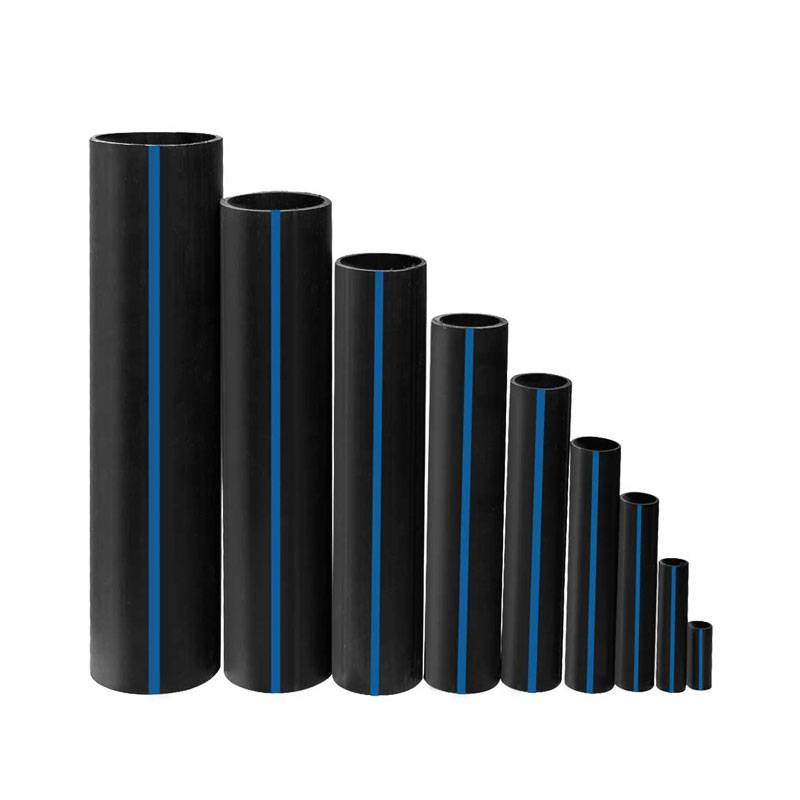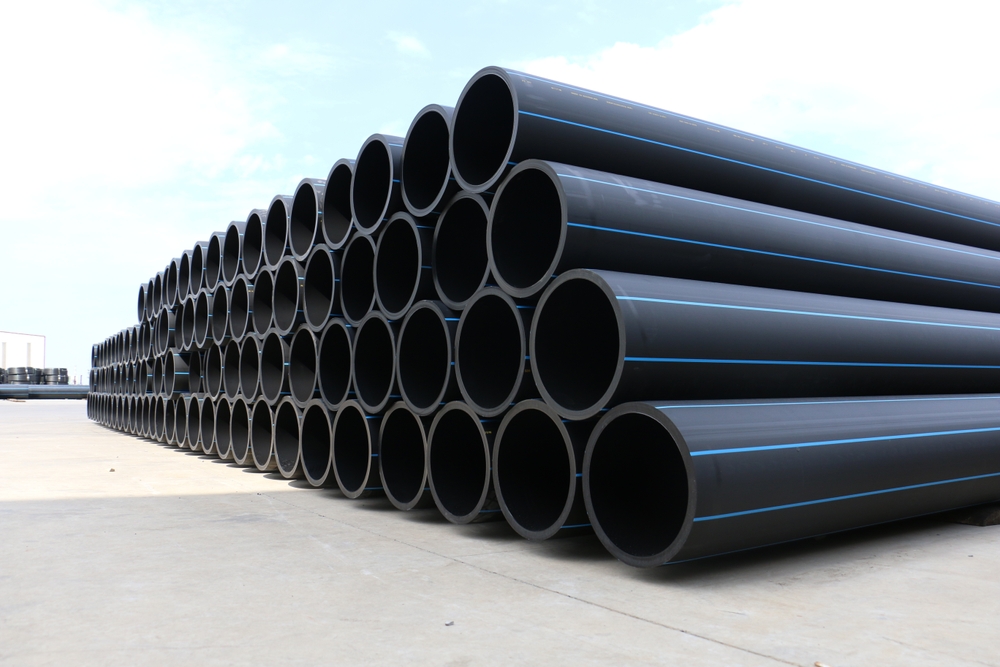FAQs About Texas hdpe pipe manufacturer and Their Process
Wiki Article
Check Out the Manufacturing Process Behind High-Quality HDPE Pipe and Its Applications
The production process of top notch HDPE pipelines is detailed and systematic. It starts with the option of raw materials that enhance efficiency. Following this, ethylene goes through polymerization to develop material, which is after that formed with extrusion. Quality assurance is critical, making certain that the last product fulfills strict requirements. The journey of HDPE pipelines doesn't end with manufacturing. Their applications throughout different sectors reveal a wider value worth analyzing.Understanding HDPE: Characteristics and Advantages

High-density polyethylene (HDPE) is a functional polycarbonate understood for its sturdiness and resistance to numerous environmental variables. This material displays exceptional tensile stamina, making it appropriate for requiring applications. Its low-density framework contributes to a lightweight item, assisting in convenience of dealing with and setup. HDPE likewise showcases amazing resistance to chemicals, which lessens deterioration when subjected to extreme materials.
The material's reduced dampness absorption better improves its longevity, making it excellent for usage in pipelines and storage containers. Furthermore, HDPE is immune to ultraviolet (UV) radiation, ensuring that items preserve their stability even when subjected to sunlight. Its versatility permits for the production of intricate forms without jeopardizing toughness. The environmentally friendly nature of HDPE, typically originated from recycled materials, includes in its charm, promoting sustainable practices in production. On the whole, these residential or commercial properties and benefits make HDPE a favored selection for numerous industrial and consumer applications.
Basic Material Option for HDPE Manufacturing
The selection of basic materials for HDPE manufacturing is vital to confirm the end product fulfills the preferred requirements and quality criteria. High-density polyethylene (HDPE) is mainly produced from polymerized ethylene, obtained from fossil gas such as natural gas or unrefined oil. The high quality of these feedstocks considerably affects the mechanical and thermal properties of the final HDPE.Ingredients likewise play a significant duty in improving HDPE's efficiency, consisting of anti-oxidants, UV stabilizers, and colorants, which enhance longevity and resistance to environmental aspects. The choice procedure have to think about not just the chemical structure of the raw materials however also their handling characteristics to guarantee efficient manufacturing.
In addition, the sourcing of resources should focus on sustainability and compliance with environmental laws, as liable practices are vital in today's market. Ultimately, cautious basic material choice lays the structure for generating high-quality HDPE pipelines suitable for varied applications.
The Extrusion Process: Forming HDPE Pipeline
The extrusion process plays a vital duty in shaping HDPE pipes, starting with careful material preparation methods that guarantee optimal circulation and uniformity. Equally important is the layout of the die, which straight influences the final measurements and surface area quality of the pipeline. Together, these aspects contribute significantly to the efficiency and high quality of HDPE pipeline production.Material Preparation Methods
Effective manufacturing of HDPE pipelines starts with meticulous product preparation strategies, specifically the extrusion process. Throughout this stage, high-density polyethylene resin is very first dried to get rid of dampness, making certain optimal flow qualities. The material is after that fed right into the extruder, where it undertakes heating and melting, changing into a viscous state. This home heating procedure is thoroughly managed to keep the product's honesty and efficiency. The molten HDPE is compelled with a die, shaping it into a continuous pipeline type. Appropriate temperature administration during extrusion is necessary, as it directly affects the material's residential properties and the final product top quality. Once formed, the HDPE pipeline is cooled and cut to defined sizes, all set for succeeding processing and applications.Die Layout Significance
Accuracy in die design plays an essential role in the extrusion process of HDPE pipelines. The die functions as the last shaping tool, straight affecting the pipeline's measurements, wall surface thickness, and surface coating. A well-designed die warranties uniform product circulation, reducing defects such as abnormalities and vulnerable points. The geometry of the die need to be maximized to suit the details buildings of HDPE, including its viscosity and thermal habits during extrusion. Additionally, the cooling rate of the product as it goes through the die can markedly influence the pipeline's architectural honesty. Spending in advanced die technology is essential for manufacturers intending to produce high-quality HDPE pipes that meet sector requirements and consumer expectations.High Quality Control Measures in HDPE Manufacturing
Various elements affect the high quality of HDPE pipeline manufacturing, effective high quality control procedures are vital to ensure uniformity and integrity in the last product (Pipe Manufacturing Midland TX). Key quality assurance methods include extensive material evaluation, verifying that the raw polyethylene satisfies well-known criteria for pureness and thickness. During the extrusion process, parameters such as temperature, pressure, and cooling time are very closely kept track of to maintain dimensional accuracy and architectural integrityIn enhancement, post-production screening is crucial; producers typically carry out hydrostatic tests to evaluate the pipe's strength and resistance to pressure. Aesthetic evaluations for surface area defects additionally improve quality control. Accreditation from appropriate criteria organizations, like ASTM or ISO, gives an extra layer of trustworthiness. By applying these thorough high quality control measures, manufacturers can decrease flaws, enhance efficiency, and make certain that the HDPE pipes meet the specific requirements of different applications, ultimately resulting in client satisfaction and rely on the item.
Applications of HDPE Pipeline Throughout Industries
HDPE pipes are made use of throughout different sectors because of their sturdiness and versatility. In water circulation systems, they ensure reliable shipment, while in wastewater monitoring, they supply dependable services for waste transportation. Furthermore, farming irrigation networks profit from HDPE's resistance to corrosion and versatility, making it an excellent selection for modern my review here farming techniques.
Water Circulation Solutions
A considerable variety of sectors count on high-density polyethylene (HDPE) pipelines for efficient water distribution systems. Known for their longevity and resistance to deterioration, HDPE pipelines are commonly used in community supply of water networks, agricultural irrigation, and industrial applications. Their lightweight nature assists in very easy handling and installment, lowering labor prices and time. Furthermore, HDPE pipelines can suit various stress degrees, making them appropriate for both reduced and high-pressure systems. Pipe Manufacturing Midland TX. The adaptability of the material permits smooth integration right into existing infrastructure, lessening the need for comprehensive excavation. HDPE's resistance to chemical leaching assurances that the water provided continues to be risk-free and clean, making it an excellent option for keeping the top quality of safe and clean water throughout various fields.Wastewater Administration Solutions
Efficient water circulation systems likewise pave the way for cutting-edge wastewater administration services, where high-density polyethylene (HDPE) pipes play a considerable duty. Renowned for their resilience and resistance to rust, HDPE pipes are ideal for transporting wastewater in different settings. Their versatility permits very easy installation in complex atmospheres, minimizing the need for substantial excavation. Additionally, HDPE's smooth indoor surface decreases friction, boosting flow prices and efficiency. These pipes are also immune to chemical leaching, ensuring that pollutants do not compromise the surrounding atmosphere. Industries, towns, and therapy facilities increasingly count on HDPE pipes for their reliability and durability, making them a preferred option for modern-day wastewater administration systems. This flexibility emphasizes the essential importance of HDPE pipelines throughout various applications.Agricultural Irrigation Networks
Agricultural irrigation networks benefit substantially from making use of high-density polyethylene (HDPE) pipes, which provide effective and dependable water distribution to plants. HDPE pipelines are light-weight, making them easy to transfer and set up, while their versatility enables for various configurations in varied surfaces. These pipes demonstrate exceptional resistance to corrosion, chemicals, and UV radiation, ensuring resilience in extreme agricultural environments. Additionally, their smooth interior surface area reduces rubbing loss, enhancing water flow and decreasing power costs connected with pumping. The durability of HDPE pipes, typically surpassing 50 years, adds to lower maintenance and substitute costs. Farmers progressively count on HDPE pipelines to enhance watering efficiency and advertise lasting farming practices, inevitably leading to boosted plant returns and source conservation.
Future Trends in HDPE Pipe Innovation
As the demand for sustainable and reliable framework grows, innovations in HDPE pipe technology are positioned to transform different sectors. Emerging patterns consist of the combination of wise innovations, such as sensors and IoT abilities, which promote real-time surveillance of pipe problems, decreasing maintenance costs and preventing leaks. In addition, the development of innovative manufacturing methods, such as 3D printing, is allowing the manufacturing of complex, personalized pipe designs that satisfy specific project needs.The focus on recycling and circular economic climate methods is driving the technology of HDPE pipes made from recycled materials, enhancing sustainability. Improved jointing approaches, such as electro-fusion and mechanical installations, are additionally improving setup effectiveness and reliability. The expanding focus on environmental laws is pushing makers to take on greener production procedures, making sure that HDPE pipelines not just fulfill industry criteria however additionally cultivate a more lasting future for infrastructure advancement.
Frequently Asked Concerns
Just How Does HDPE Compare to Other Plastic Products?
HDPE outshines many various other plastic products pertaining to sturdiness, chemical resistance, find out here now and flexibility. Its low thickness and high tensile stamina make it excellent for different applications, typically going beyond options in both efficiency and longevity.What Are the Ecological Impacts of HDPE Production?
The environmental effects of HDPE manufacturing include greenhouse gas discharges, power intake, and prospective air pollution from making processes. Furthermore, improper disposal can bring about dirt and water contamination, increasing worries regarding long-lasting ecological effects.Can HDPE Pipes Be Reused?
Yes, HDPE pipelines can be recycled. Lots of centers approve utilized HDPE for processing, changing it right into new products. This reusing contributes to sustainability efforts, minimizing plastic waste while saving resources and power in the production cycle.What Is the Life-span of HDPE Water Lines?

How Do Temperature Level Variants Impact HDPE Pipe Efficiency?
Temperature level variations significantly influence HDPE pipeline efficiency, affecting adaptability and stamina. High temperature levels can lead to softening, while reduced temperatures might trigger brittleness, eventually affecting the pipe's sturdiness and viability for numerous applications in diverse environments.Report this wiki page